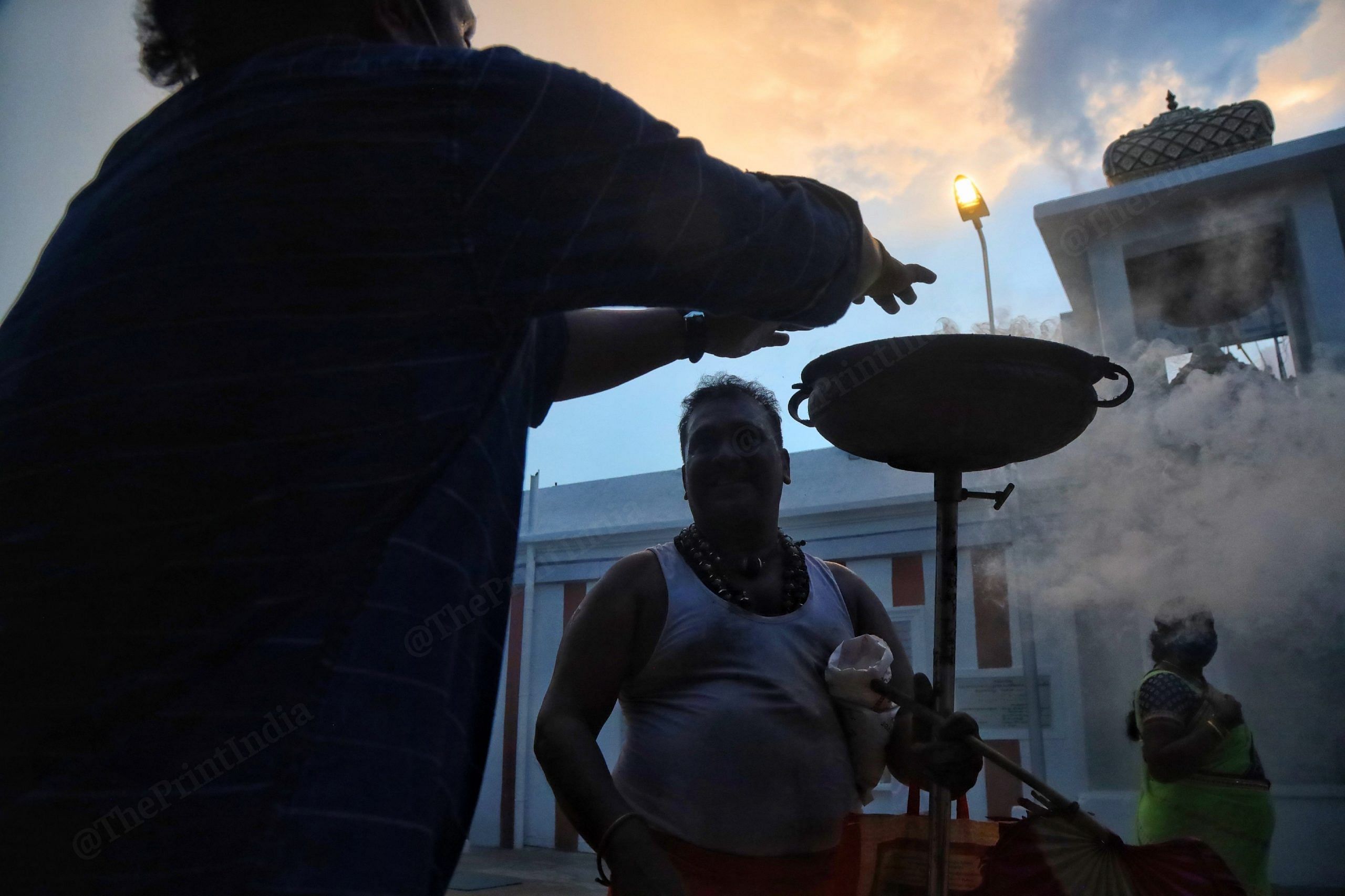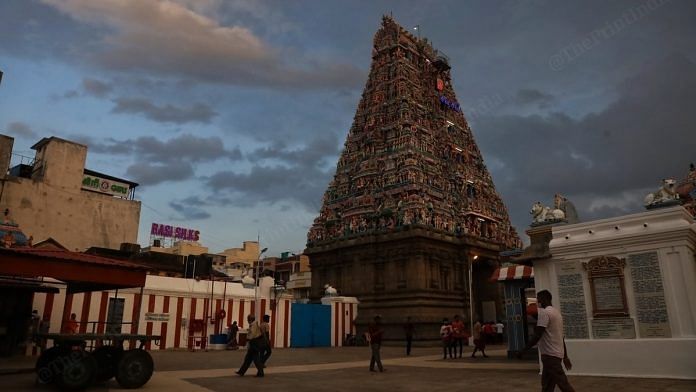Chennai: Outside the Kapaleeshwarar Temple in Chennai, 78-year-old Natarajan takes out his book of shlokas and starts reciting his daily prayers, two hours before the temple gates officially open at 6 pm.
He recites his shlokas in Sanskrit at the temple where he has been coming twice a day for three years now. But he now has the option of doing this in Tamil too.
With a fresh directive to 47 temples in Tamil Nadu, including Kapaleeshwarar, the newly-elected DMK government has given devotees the option to offer archanai (prayers) in Tamil as well.
Natarajan is happy with the move.
“People will now understand the meaning of prayers and will be more aware of their bhakti (devotion). This will also open temples and prayers to people across different socio-economic backgrounds,” he says.

Promotion of Tamil language has long been a goal of the ruling Dravida Munnetra Kazhagam, which traces its roots to the Dravidian movement. The government just celebrated 100 years of the state legislature. Even after he was sworn in as CM in May, M.K. Stalin had taken to Twitter to describe himself as “Chief Minister of Tamil Nadu, president of the DMK, belongs to Dravidian stock”. The latest temple move is in line with the party’s agenda.
In Tamil Nadu, which sees Dravidian leader Periyar as a hero, promoting Tamil culture and language has always been a priority. Opposing the caste system and resisting imposition of Hindi has been the bedrock of the Dravidian movement.
While Natarajan sees the positives in this move, he also cautions that many conservatives will oppose the move as they believe prayers should take place in Sanskrit to retain purity.
Also read: Ram temple in Ayodhya to welcome devotees by December 2023
‘Not about promoting Tamil or degrading any other language’
Speaking to ThePrint, Minister for Hindu Religious and Charitable Endowments P.K. Sekar Babu says the idea to introduce Tamil in temples was first conceived by former DMK chief, late M. Karunanidhi, in 1971. It has now been implemented on the advice of CM Stalin.
“It is not about promoting Tamil or degrading any other language but simply so that people can understand which language they are praying in… and understand the shlokas that are being recited by the priests,” Babu says.
Explaining the logistics, Babu says a signage will be installed at each of these 47 temples for “Annai Thamizhil Archanai” (prayers in mother tongue Tamil). The signage will have the name of a priest, who will conduct the prayers in Tamil, as well as his mobile number, for devotees to reach out to him, Babu says.
“The scheme will be made available in all the temples under under Hindu Religious and Charitable Endowments (HR&CE) in a phased manner,” he says.
It won’t be Sanskrit shlokas translated into Tamil, but an entirely different set of Tamil potris (Tamil shlokas in the praise of God) for those who want to pray in their mother tongue, says Babu.
Anti-caste activist D. Ravikumar says archanais in Tamil was usually the norm across the state in temples in both rural and urban areas, which were not under government control. He points out that the new decision was only now being implemented for temples that are under government control, and come under HR&CE.
Also read: How Tamil Nadu’s training thousands of nurses to handle kids with Covid as it preps for 3rd wave
Nothing new, been doing this for generations, says priest
As the Kapaleeshwarar temple gates open at 6:00 pm, people enter in hoards. But what is different now is the Annai Thamizhil Archanai signage, next to which people queue up to offer prayers.

The temple head priest E. Venkata Subramanian says even though the option has been introduced just now, over 10 people have requested for archanais in Tamil since Friday morning. He is sure many more will come soon as the news spreads.
Speaking to ThePrint, he says this isn’t anything new, adding that his ancestors had been conducting archanais in Tamil for a long time. He is a seventh generation priest and Tamil archanais flowed to him from his previous generations.
Asked if more people will come now to this Shiva temple, Subramanian says: “All people come here for the sake of God only. Kapaleeshwarar has magnetic powers, he pulls all people towards him”.
Won’t bring down caste barriers, says activist
Ravikumar says that he welcomes the move, but doesn’t believe it will break any caste barriers. According to him, this will only give a push to Tamil, and to bhakti (devotion) among scholars.
“It is important to note that Sanskrit scholars are also Tamil scholars and many of them are Brahmins. Therefore it will be the same Brahmins telling the mantras and performing the same rituals. The same priests will be there, so I doubt it will break any caste barriers but instead will expand faith and religion,” he says.
Not everyone is happy
Some devotees at the Kapaleeshwar temple are opposed to this decision. An elderly 80-year-old lady says on condition of anonymity that the prayers in Sanskrit are much better, with the correct pronunciation.

However, 35-year-old Lakshmi, who has been coming to the temple since her childhood, disagrees with “paati” (the elderly woman), saying the development is good since everybody understands Tamil.
“Sanskrit belongs to one particular class of people, while Tamil is understandable to all. I can’t understand Sanskrit and all these days I was blindly praying without knowing the meaning,” she says.
As the sun sets, shlokas echo and more people throng to the temple.
Also read: ‘Every game has element of chance’ — why Madras HC quashed TN law banning online rummy, poker



